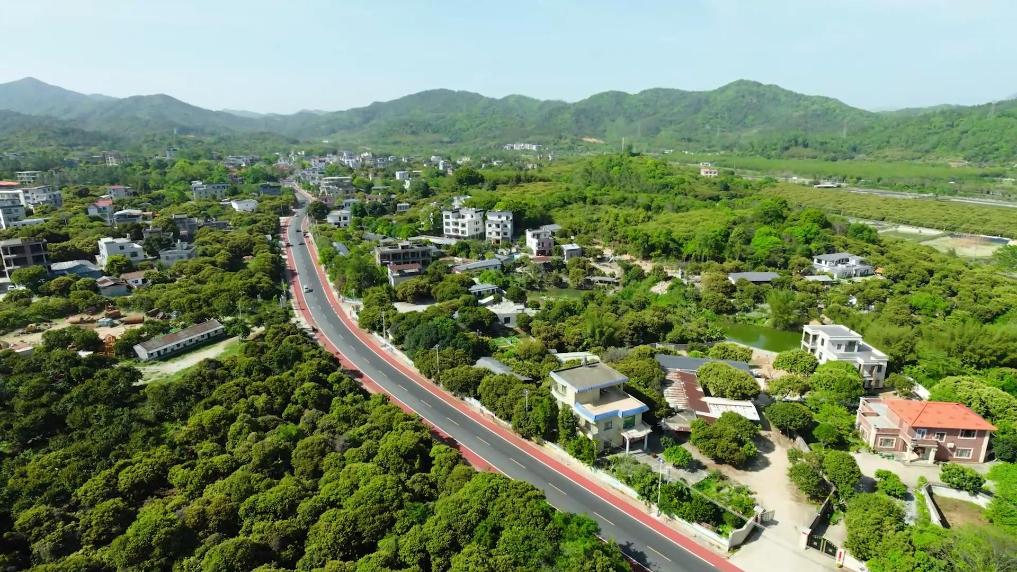Xinhua Headlines: Rustic charm of rural China trending among tourists
Source: Xinhua
Editor: huaxia
2025-05-05 22:56:32
* Long overshadowed by iconic tourist hotspots, China's rural tourism is now enjoying its moment in the spotlight.
* As city dwellers seek escape from the crowds and concrete of urban life, tranquil villages have become tourism magnets.
* With the integration of technology, cultural preservation, green development and branding, rural tourism is set to become a core engine for rural revitalization.
BEIJING, May 5 (Xinhua) -- A crystal river, lush bamboo groves and gentle village life are all the ingredients Sanwan needs to be a rural retreat that's capturing the hearts of tourists.
For Chinese people living in modernized and well-developed urban areas, this pastoral setting in east China's Jiangxi Province has become an alien but appealing lifestyle that more and more villagers package and exhibit as tourist attractions.
"People need a change from regular outings, especially from crowded scenic spots trending on social media," said Xiao Xing, who runs a family homestay in Sanwan. "Instead of checking boxes or chasing viral photo spots, many visitors now come with family and friends just to stroll through the countryside and enjoy the slower pace of life."
Long overshadowed by iconic tourist hotspots, China's countryside is now enjoying its moment in the spotlight. As city dwellers seek escape from the crowds and concrete of urban life, tranquil villages like Sanwan have become tourism magnets, offering peace, authenticity and a slower pace.
During this year's May Day holiday, rural tourism, once a niche segment, booms nationwide.
"This year's May Day holiday travel market is flourishing on multiple fronts, with both upgraded consumption and rational demand driving trends," said Fang Zeqian, an industry analyst at the Ctrip Research Institute. "The rise of 'reverse tourism' is notable, drawing more visitors to smaller cities and rural destinations and easing pressure on traditional hotspots through differentiated experiences."
Take Ji'an City, home to Sanwan Township, as an example. In recent years, the city has developed more than 200 "beautiful villages" and over 30,000 model rural courtyards. It now boasts more than 150 provincial-level A-grade rural tourism sites, underscoring the surging momentum behind countryside tourism.
According to estimates from the Ministry of Culture and Tourism, rural tourism across the country welcomed 707 million visits in the first quarter of this year, up 8.9 percent year on year. Total revenue from rural tourism reached 412 billion yuan (about 57.21 billion U.S. dollars), marking a 5.6 percent increase.
Meanwhile, these off-the-beaten-path retreats, once primarily sought after by domestic travelers, have now become coveted escapes for international visitors. China's visa exemption policies have opened the door for more travelers to explore authentic experiences beyond the well-trodden tourism paths of first-tier cities like Beijing and Shanghai.
Since the implementation of the 240-hour transit visa-free policy, the number of international visitors arriving at Chinese entry points has surged, with a 40.2 percent increase in foreign arrivals by the end of March 2025, according to the National Immigration Administration. This influx of international visitors is reshaping the rural tourism landscape.
International tourists are embracing the serene life in places like Dongsheng Village, Liuyin Township in Chongqing's Beibei District. "This is nothing like what I imagined rural China to be, there's convenience and comfort, but also an authentic connection to nature," Vietnamese visitor Nguyen Mai Anh said, picking strawberries and expressing awe at the village's blend of modern amenities and natural charm.
This group of Vietnamese tourists marks another wave of international visitors following the village's first reception of foreign tour groups in March. "In the past, foreign tourists mainly visited urban areas in China. Now, they are more eager to explore the countryside and experience its unique charm," said Fu Xiaoyun, an official with township authority.
Since the beginning of this year, Liuyin has hosted over 80 domestic and international tour groups, attracting more than 20,000 visitors, including over 6,000 from abroad. The village's four strawberry farms alone have contributed around 200,000 yuan to local residents' incomes, while during the May Day holiday, homestays were fully booked.
For some international tourists, the Chinese countryside has become a retreat where they return time and again. Jerry Grey, a 67-year-old Australian, is one such regular visitor to Yakou Village, Zhongshan City of South China's Guangdong Province.
This is undoubtedly a beautiful place, no factories, no skyscrapers, just pure land, he said, who visits the southern China village once or twice each year. He added that he loves touring China, especially the rural areas, because every time he visits, he can discover something new about village life.
China's rural tourism is gaining international acclaim. In November 2024, the United Nations World Tourism Organization recognized seven Chinese villages as Best Tourism Villages in its 2024 selection, bringing the total number of Chinese villages honored to 15.
These villages, spread across eastern, central and western China, are exemplary in their geographic, cultural, and developmental diversity, showcasing the impressive strides China has made in rural tourism development.
The rural tourism boom sweeping across China is behind the country's sweeping rural revitalization strategy, which breathes new life into once-shabby villages and has transformed them into vibrant destinations.
"The countryside now offers not only beautiful scenery but also decent infrastructure, making dining, lodging and entertainment easy," said Ma Pin, a tourist from Fujian who extended his trip in Sanwan for a more relaxed and cost-effective experience, impressed by shuttle buses connecting major sites with clean and welcoming mountain homestays.
And as tourism blossoms, so does the opportunity for local residents. Villagers are finding new roles as guesthouse owners, shopkeepers and tour guides during the boom, which gave rural communities a facelift and a new lease on life, according to Xiao.
However, nowhere may this transformation be more visible than in Guangdong's Guizhu Village. The village was once a poverty-stricken backwater on provincial lists. Just three years ago, even daytime foot traffic was rare. "You could walk for an hour and barely see a person," recalled the village Party chief Li Xiaolong.
Once hindered by crumbling infrastructure and sparse amenities, the village has undergone a dramatic facelift thanks to more than 10 million yuan invested through countryside development funds.
Paved roads now wind through revitalized riverbanks where scenic platforms offer panoramic views as well as public facilities like cultural plazas and greenways. Now it has become a social media sensation, drawing thousands of visitors each week.
Once-abandoned farmhouses have been reborn as homestays, cafés and rustic pubs. With new facilities attracting steady tourist footfall, the village's collective income surged from just 174,700 yuan in 2021 to 853,800 yuan in 2024, a stunning leap that demonstrates the actual economic impact of China's rural revitalization drive.
The head of the tourism management department at Jilin International Studies University, Liu Li believes that government efforts to improve rural infrastructure have significantly boosted the appeal of rural tourism. Tourism management professionals are increasingly joining this sector, using their expertise and innovative thinking to develop a wide range of tourism products and experiences, enhancing rural tourism's quality and service standards.
Looking ahead, experts believe that rural tourism in China is poised for continued growth. Lyu Jun, a member of the national expert committee of tourism science construction, notes that the sector is entering a phase of high-quality development, driven by policies, market forces and cultural influences.
"With the integration of technology, cultural preservation, green development and branding, rural tourism is set to become a core engine for rural revitalization," he said. "It will meet the dual demands of tourists for both nostalgia and innovative experiences, offering a sustainable model for the future of travel." (Video reporters: Yang Jing and Li Sijia; Video editors: Zhang Yucheng and Zhao Xiaoqing) ■













Comments